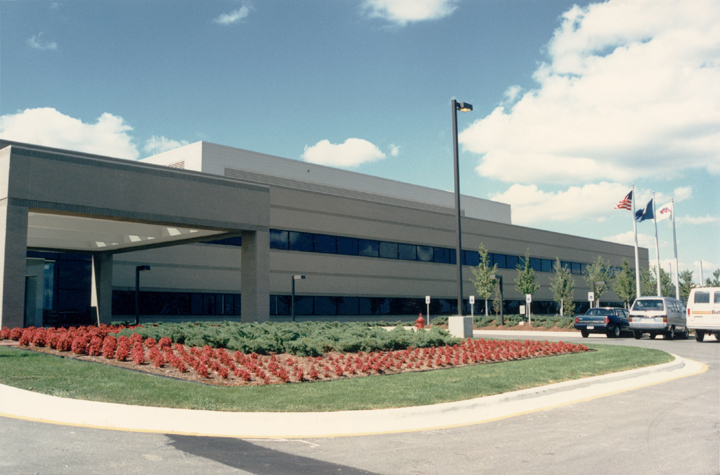Section 3. Local Production Starts in North America
Item 3. TMC Expands into North America Independently: TMM, TMMC Established
TMC established the North America Production Study Team within the Overseas Operation Department in February 1985. The purpose of the team was to investigate in detail the feasibility and potential of all aspects of local operations from production to sales. At the time that NUMMI was starting production, executives within TMC frequently discussed production in North America in parallel with NUMMI's start-up operations.
At that time, sales of Toyota vehicles in North America reached 1 million units, and the belief that TMC should contribute to the local economy in terms of employment by establishing a wholly owned manufacturing company gained momentum. The effects of the voluntary export restraints were causing supply shortages, and as a result, expanding supply by setting up independent operations became a priority issue. It was based on these considerations that an extraordinary meeting of the TMC Board of Directors decided and formally announced in July 1985 that TMC would establish its own plants in the United States and Canada. TMC planned to produce about 200,000 passenger cars with 2,000 cc-class engines in the United States annually and about 50,000 passenger cars with 1,600 cc-class engines in Canada annually, both with target production start dates in 1988.
In August 1985, the North America Production Study Team was made independent of the Oversees Operation Department and became the North America Business Preparation Office. At the same time, the North America Project Committee was established as the supervisory body of the North America Business Preparation Office with Executive Vice President Gentaro Tsuji as its chairman and seven executives as members. A decision was made to solicit proposals for production sites in the United States and Canada, and selecting a site became the first major task. Shortly after the plan was announced, offers from 29 states in the United States and eight provinces in Canada were received.
The North America Business Preparation Office prepared screening materials by analyzing and assessing various factors such as parts procurement, logistics, electric power availability, work force, public safety, and incentives from state and provincial governments based on the materials received from each state and province. Between them, the executives visited all the candidate sites to confirm the various conditions. As a result of this process, sites in the suburbs of Georgetown in Scott County, Kentucky, in the United States and Cambridge, Ontario, in Canada were selected in December 1985. Chairman Eiji Toyoda and President Shoichiro Toyoda, respectively, made announcements at the sites. President Toyoda made the following statement to more than 200 members of the media at the Kentucky press conference.
Selecting the plant sites was one of the most difficult choices in the history of Toyota. Taking into consideration all of the factors, we decided that Kentucky is the optimal site. We are grateful to everyone who submitted proposals. Today's decision on a plant construction site is one of the most auspicious moments in Toyota's history since the creation of our No. 1 prototype vehicle in 1935.
Twenty-five years after TMC began exporting cars to the United States in 1957, we have taken a major step towards realizing our dream of 'building complete partnerships with all of you in America.' We will make every effort to contribute to employment and economic growth while creating new relationships that will be useful to you.
President Toyoda received many messages of welcome from the guests at the announcement, including from Kentucky Governor Martha Collins, who engaged in active lobbying activities including visiting the TMC head office.
Toyota Motor Manufacturing, U.S.A., Inc. (TMM; now Toyota Motor Manufacturing, Kentucky Inc.; TMMK) and Toyota Motor Manufacturing Canada Inc. (TMMC) were established in January 1986 as American and Canadian subsidiaries, respectively. TMC Vice President Kaneyoshi Kusunoki, who had been in charge of the Production division and the North America Business operation Group and was involved in production preparations by NUMMI, was appointed president of both companies. TMM was owned 80 percent by Toyota Motor Sales, U.S.A., Inc. and 20 percent by TMC, and TMMC was wholly owned by TMC. The experience gained from NUMMI was put to good use when constructing the plants in areas including labor-management relations, human resource development, introduction and operation of facilities, creation of logistics systems, and contributions to local communities. NUMMI employees, however, were former GM personnel, while all TMM employees were newly hired. Full consideration was given to selecting a diverse workforce through a fair process. In addition, since this was Kentucky's first auto plant, there were no available experienced employees with the exception of executives, so various innovations to the content of training had to be made, including an emphasis on the basics of auto manufacturing. The mother plant system was adopted, with the Tsutsumi Plant serving as the mother plant for TMM, which was to produce the Camry, and the Takaoka Plant designated the mother plant for TMMC, which was to produce the Corolla.



